Imagine the thrill of hitting your target precisely, mastering archery. For new archers and outdoor enthusiasts, learning to draw a bow correctly is the foundation of successful shooting. This guide will walk you through the essential techniques and tips to become proficient at archery. From understanding the types of bow draws to executing a smooth release, you’ll gain the insights needed to enhance your skills. Let’s explore archery and discover how to master bow drawing.
Understanding The Essence Of A Bow Draw
Before you can shoot an arrow, you must first understand what a bow draw entails. Bow draw is the process of pulling back the bowstring to store energy in the bow. This energy is then released to propel the arrow towards the target. This fundamental archery technique requires coordination, strength, and precision.
Bow draws have evolved from simple hand bows used by early hunters to modern compound bows designed for competition. Traditional archers relied on instinctive techniques, while modern archery incorporates scientific methods to enhance performance. Regardless of the style, mastering bow draw is crucial for accuracy and consistency.
Honing your bow draw cannot be overemphasized. Proper draw ensures that the arrow is released with maximum force and accuracy, improving your chances of By investing time in understanding and practicing this technique, you’ll lay a solid foundation for your archery skills.
Also Read : Discover The Joy Of Archery With A Bow And Arrow For Beginners
Step-By-Step Guide To Drawing A Bow
In this section, we will provide a detailed, step-by-step guide to drawing a bow. Each step is crucial for achieving perfect archery form.
Step 1: Perfect Your Stance And Grip
The first step in drawing a bow is adopting the correct stance. Ensure that your feet are shoulder-width apart, perpendicular to the target, and you distribute your weight evenly. This stable base will support your shooting motion and enhance your accuracy.
Next, focus on your grip. Hold the bow firmly but not too tightly, as tension can affect your aim. The grip should rest on the webbing between your thumb and index finger, with your fingers relaxed. This relaxed grip allows for smooth bowstring release.
Step 2: Nock The Arrow With Precision.
Nocking the arrow is the process of attaching it to the bowstring. Align the nock (the small notch at the arrow’s end) with the bowstring’s nocking point, ensuring it clicks securely in place. This step is crucial for consistent shot placement.
Always ensure the arrow is perpendicular to the bowstring and positioned between the bow’s whisker biscuit or arrow rest. This alignment ensures that the arrow flies straight and true towards the target.
Step 3: Execute The Bowstring Draw
Drawing the bowstring is a multi-step process that requires coordination and focus. Begin by raising the bow to shoulder height, keeping your shoulders relaxed. Hook your fingers around the bowstring, using the first joints of your index, middle, and ring fingers.
As you draw the string back, engage your back muscles rather than your arms. This technique, known as back tension, provides stability and control. Continue pulling until your hand reaches the side of your face, where the anchor point is established.
Step 4: Anchoring For Consistency
Anchoring is the act of placing your drawing hand against a reference point on your face, such as the corner of your mouth or chin. This consistent anchor point is essential for repeatable shots and accuracy.
Experiment with different anchor points to find what works best for you. Once you establish a reliable anchor, practice drawing to that point consistently in every shot.
Step 5: Aim With Precision.
With the bowstring drawn and anchored, it’s time to aim. Focus your eyes on the target, aligning the sight pin or arrow tip with the bullseye. Maintain steady breathing to reduce movement or shaking.
Aiming requires mental focus and concentration. Visualize the arrow hitting the target as you align your shot. This technique enhances accuracy and confidence in your shooting abilities.
Step 6: Release The Arrow Smoothly
The release is the final step in the bow drawing process. Relax your drawing fingers to let the bowstring slip off effortlessly. A smooth release minimizes the impact of unwanted movement on the bow, ensuring a straight and accurate shot.
Follow through with the shot by maintaining your stance and keeping your eyes on the target until the arrow hits. This practice reinforces good habits and refines your technique.
Also Read : Mastering The Bow And Arrow: The Fun And Easy Guide For Beginners
Expert Tips And Common Mistakes To Avoid
To excel in archery, it’s essential to learn from seasoned experts and avoid common pitfalls. Here are some valuable tips and common mistakes to remember:
- Expert Tips from Professional Archers:
“Focus on consistency in your form and technique,”
advises Olympic archer Brady Ellison. Consistency is the key to accuracy.
“Start with a lighter bow to build strength and refine your technique,”
suggests archery coach Kim Smith. Gradually increase the draw weight as you improve.
- Common Mistakes to Avoid:
- Over gripping the bow can lead to inconsistent shots. Keep your grip relaxed and natural.
- Neglecting proper anchor point consistency can result in varying shot placements. Practice finding and maintaining a reliable anchor point.
Also Read : Mastering Bow Tuning For Peak Archery Performance
Safety Considerations For Drawing A Bow
Safety should always be a top priority when archery. Here are essential safety tips to ensure a safe and enjoyable experience:
- Always inspect your equipment before use. Check for any signs of wear and tear, such as frayed bowstrings or cracks in the bow limbs.
- Never point a loaded bow at anything you don’t intend to shoot at. Maintain awareness of your surroundings and ensure the shooting range is clear.
- Use proper protective gear, such as armguards and finger tabs, to prevent injuries during shooting.
Frequently Asked Questions(FAQs)
How To Draw A Bow Easily?
Start with a bow that matches your strength level. Practice regularly to build muscle memory and improve drawing skills.
How To Draw An Arrow With A Bow?
Follow the step-by-step guide outlined in this article to nock the arrow, draw the bowstring, and release the arrow.
How Do You Draw A Bow Shape?
The bow shape is formed by the bowstring tension, creating a curved arc when drawn.
How Do You Draw A Straight Bow?
Maintain a consistent and balanced stance, grip, and anchor point to achieve a straight and accurate shot.
Also Read : Mastering Bow Tuning For Peak Archery Performance
Advanced Techniques To Elevate Your Skills
For those looking to take their archery to the next level, consider these advanced techniques:
Advanced Anchoring Techniques: Experiment with different anchor points, such as the jawline or cheekbone, to find the most stable and comfortable position.
The Role of Physical Fitness: Engage in regular strength training and cardio exercises to improve endurance and strength at the same time.
Insights on Different Types of Bows: Explore traditional longbows, recurve bows, and modern compound bows to understand how each affects the drawing process.
Also Read : How to Measure Draw Length of a Bow – Archery Guide
Real Life Examples And Success Stories
Discover real-life examples of archers who master the bow drawing technique:
- A novice archer’s Journey to Accuracy:
Sarah, a beginner archer, improved her accuracy and form through dedicated practice. She documented her progress with before-and-after results, showcasing her archery skills advancement.
- Professional Archer Overcomes Form Issues:
Jack, a professional archer, overcame persistent form issues by seeking guidance from experienced coaches. Their expert advice helped him make the necessary adjustments, leading to significant improvements in his competition performance.
Also Read : Mastering Archery Safety: Understanding Dry Firing A Bow
Final Thoughts
Drawing a bow is an art that combines skill, focus, and dedication. By mastering the fundamental techniques outlined in this guide, archery enthusiasts and beginners can elevate their shooting abilities. They can also enjoy the rewarding experience of hitting the target with precision.
Remember to practice regularly, prioritize safety, and seek guidance from experienced archers and trainers. If you’re eager to learn more about archery or receive personalized advice, consider reaching out to local archery clubs or enrolling in professional training programs.
Recommended Articles
- The Ultimate Guide To Choosing Between Compound Bow vs Crossbow
- How To Carry A Bow – Tips & Techniques For Archers
- Ultimate Guide To Installing Compound Bow Arrow Rest
- The Ultimate Guide To The Best Archery Brands Of Compound Bows
- How To Utilize Recurve Bow Sights: A Comprehensive Guide
- The Archer’s Craft: Understanding Parts Of Recurve Bow



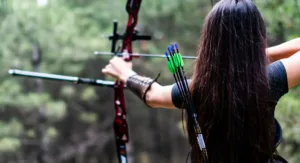
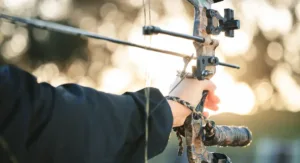
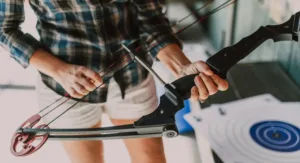
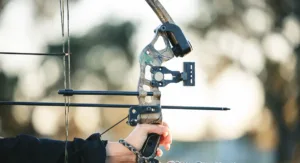
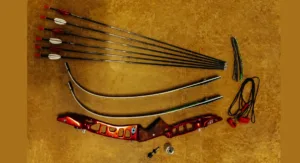
3 thoughts on “Master The Art Of Bow Drawing For Beginners”
Comments are closed.